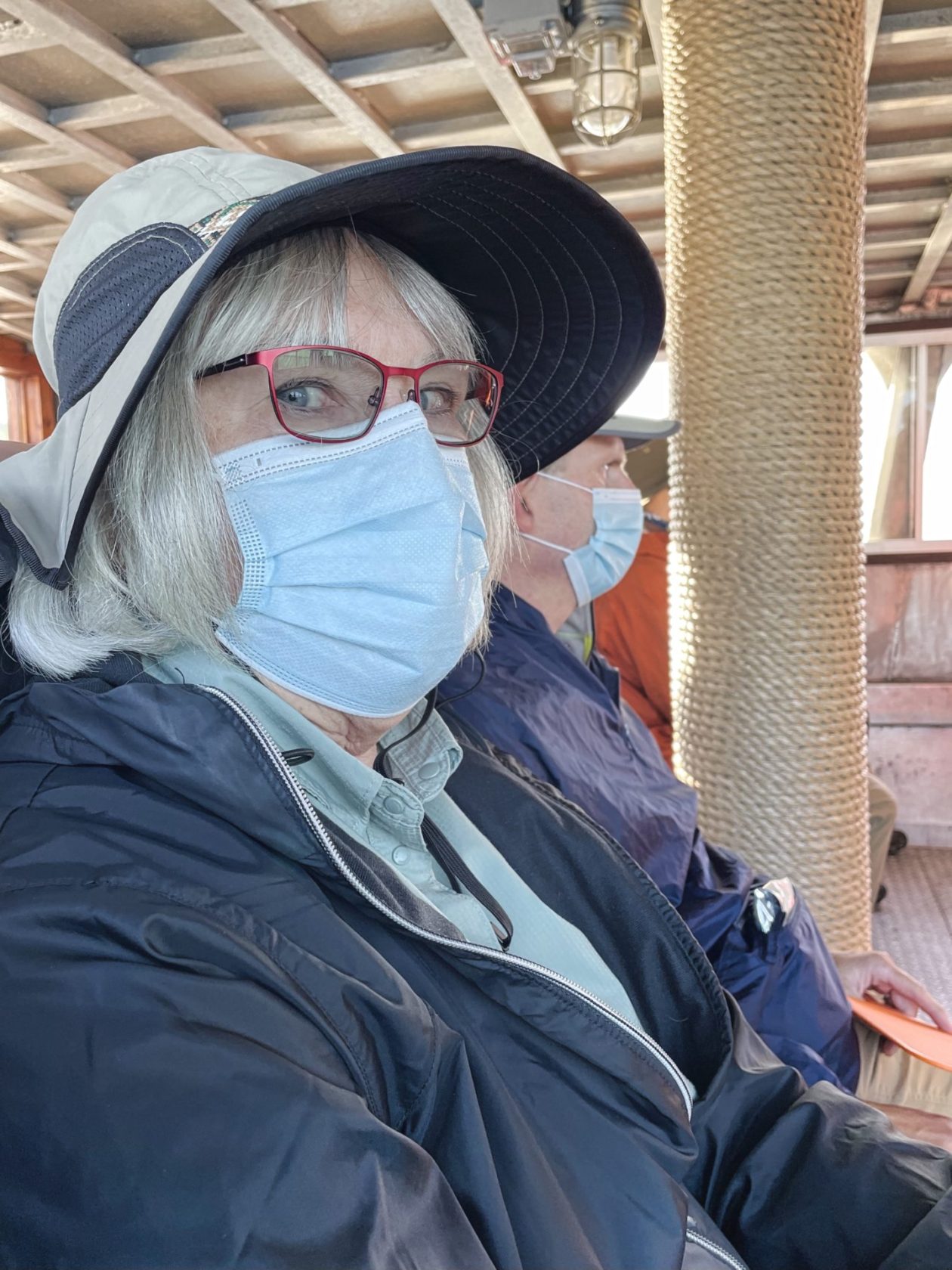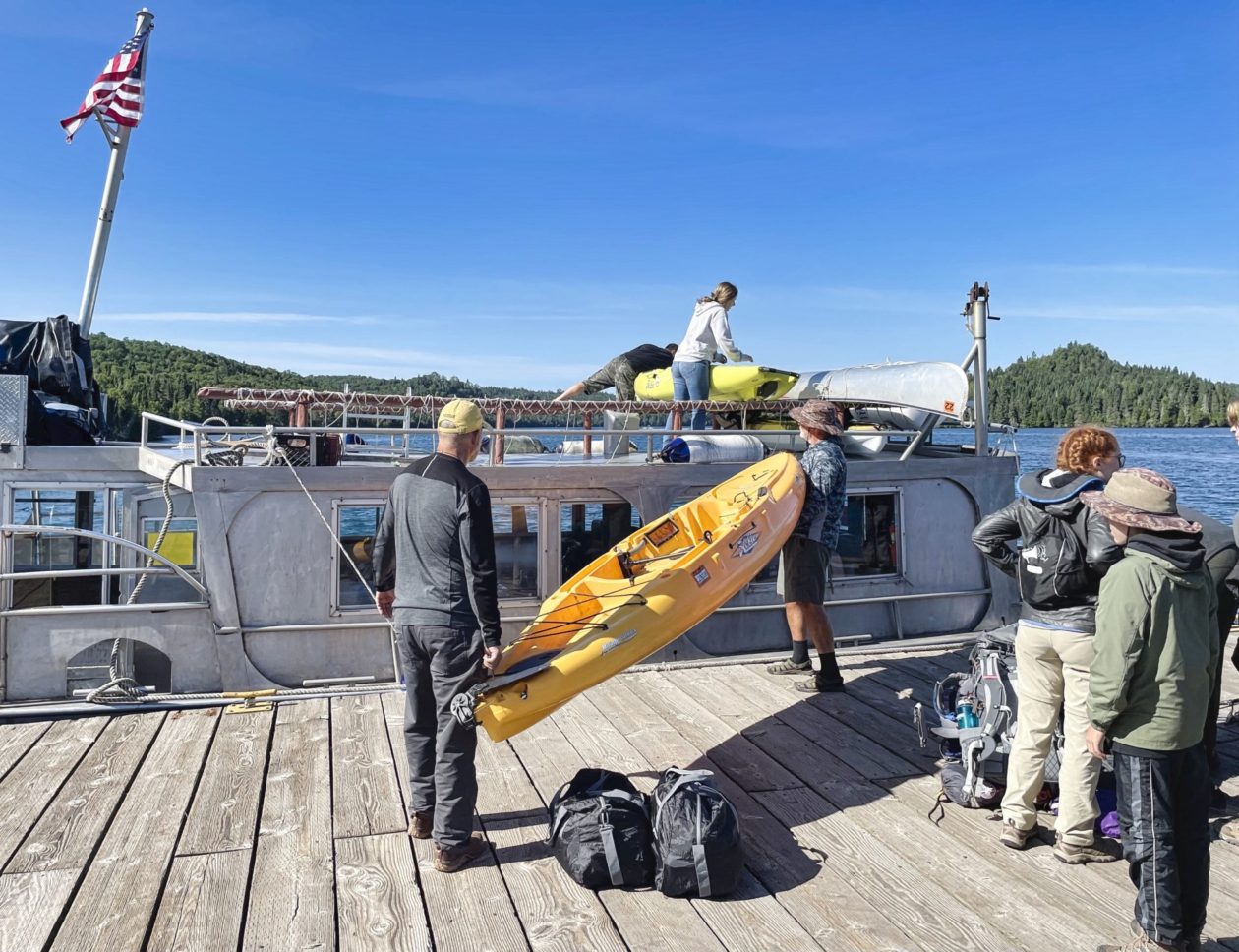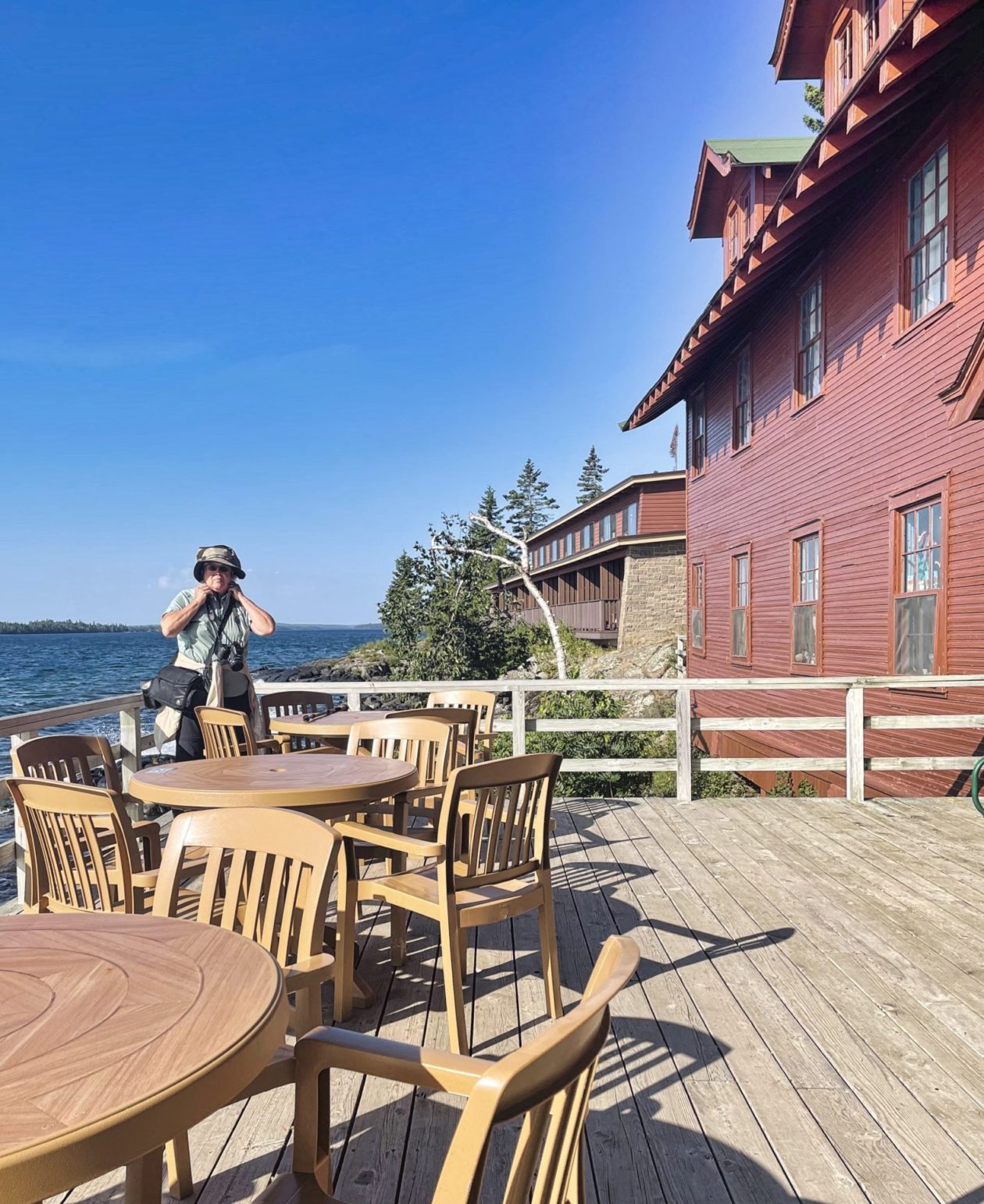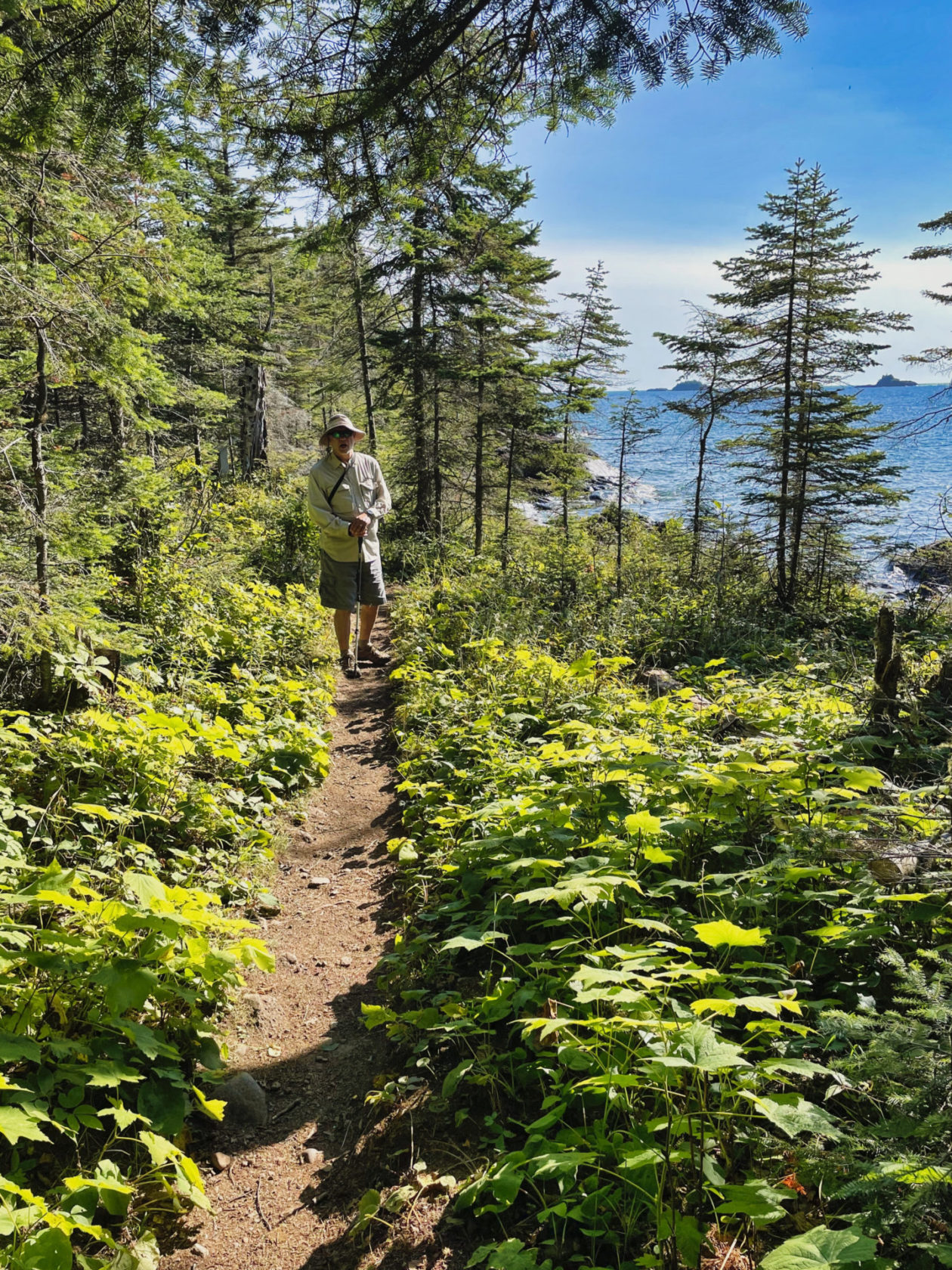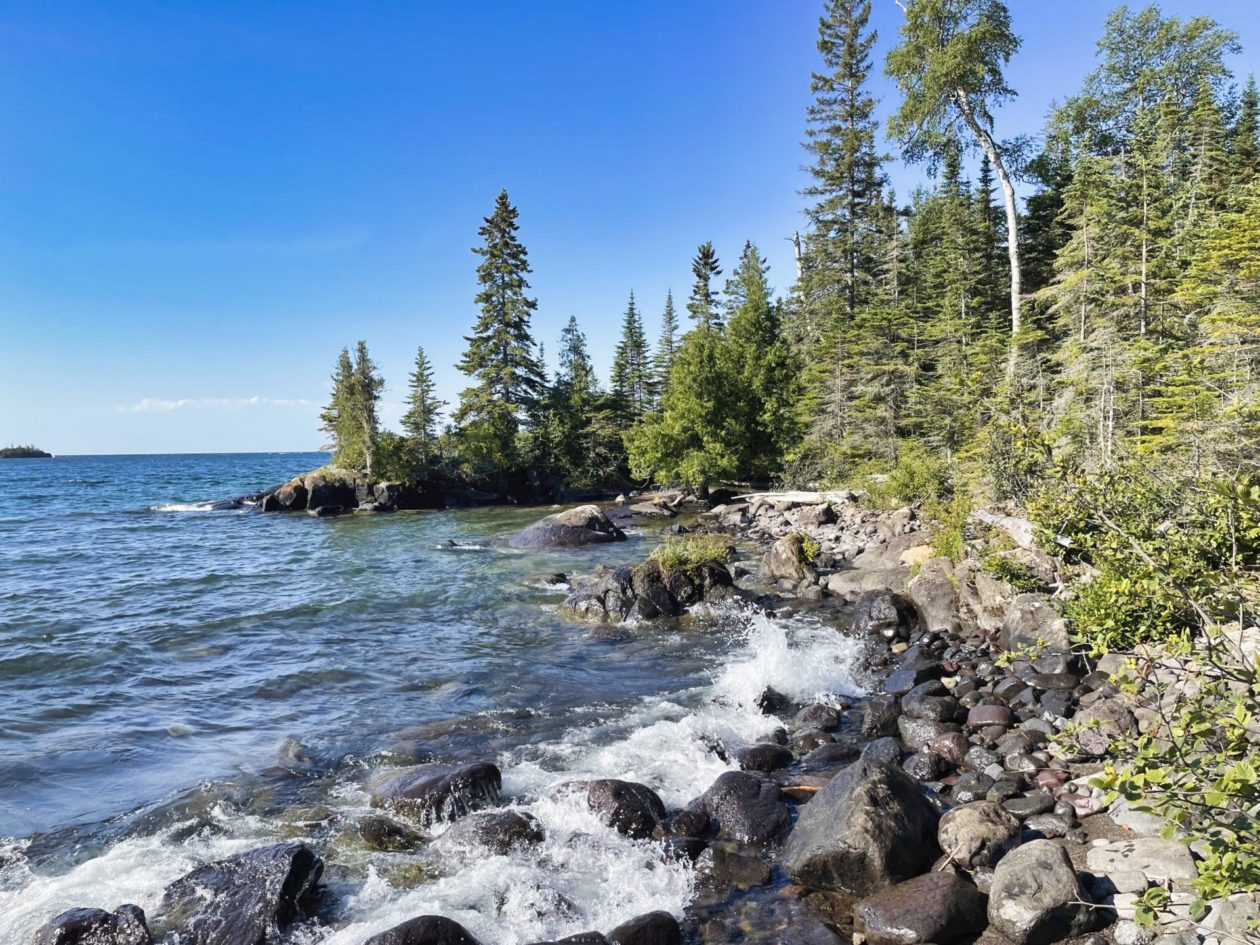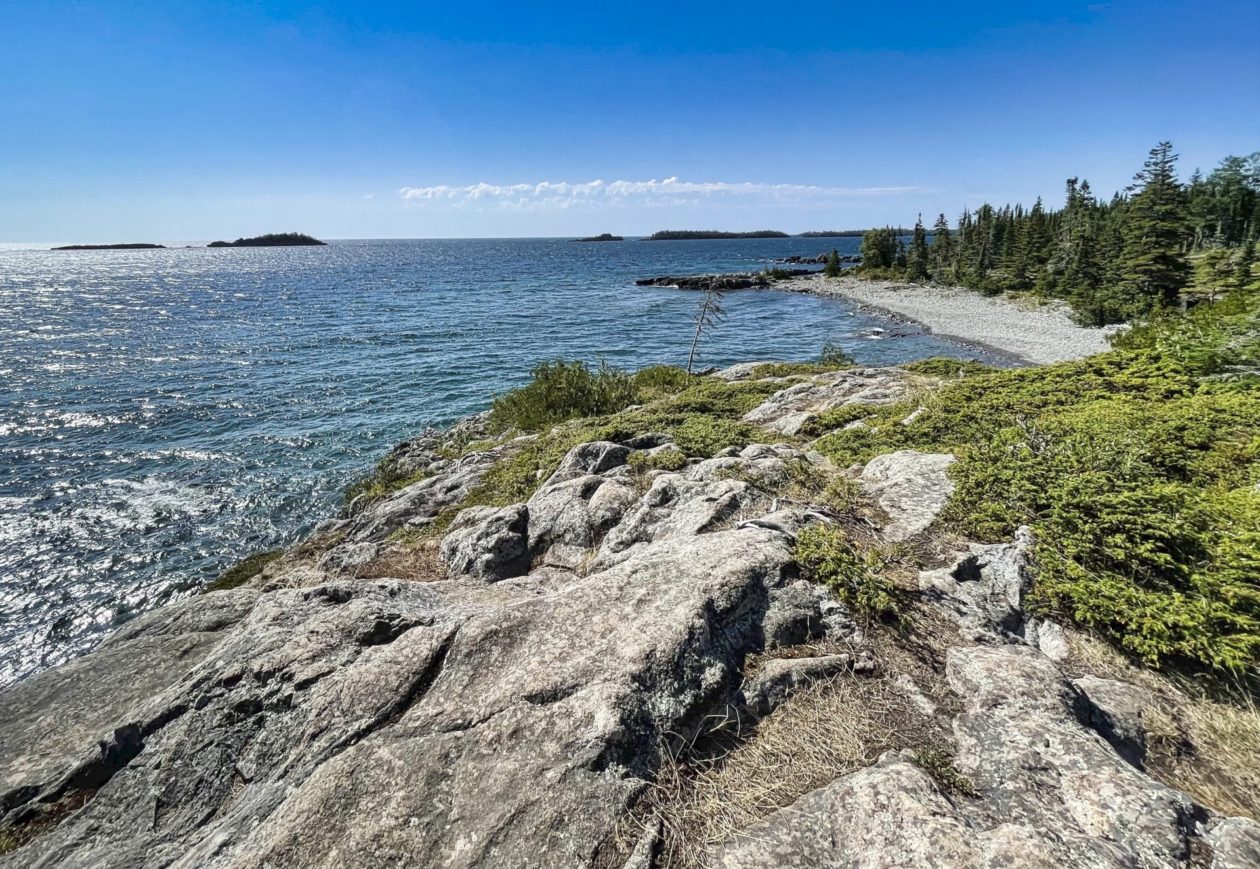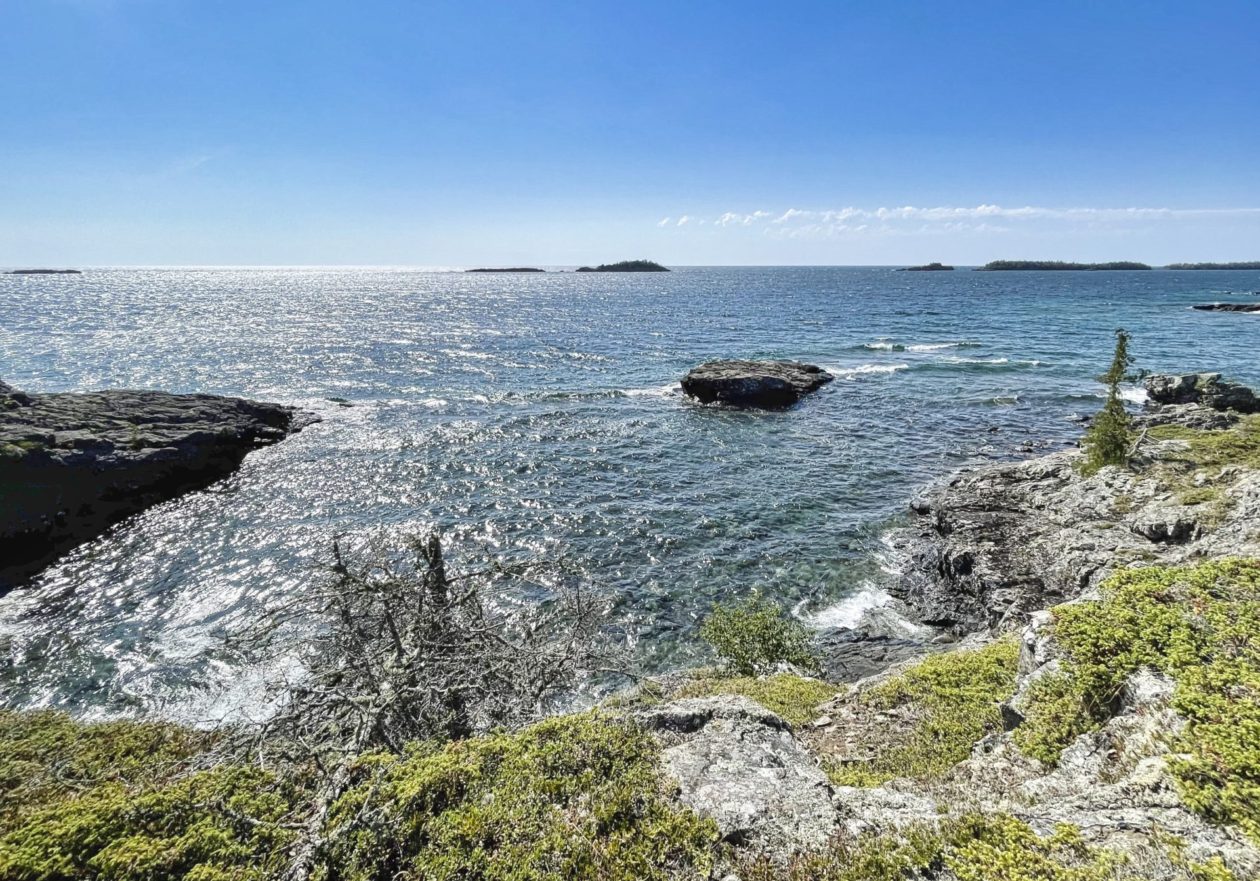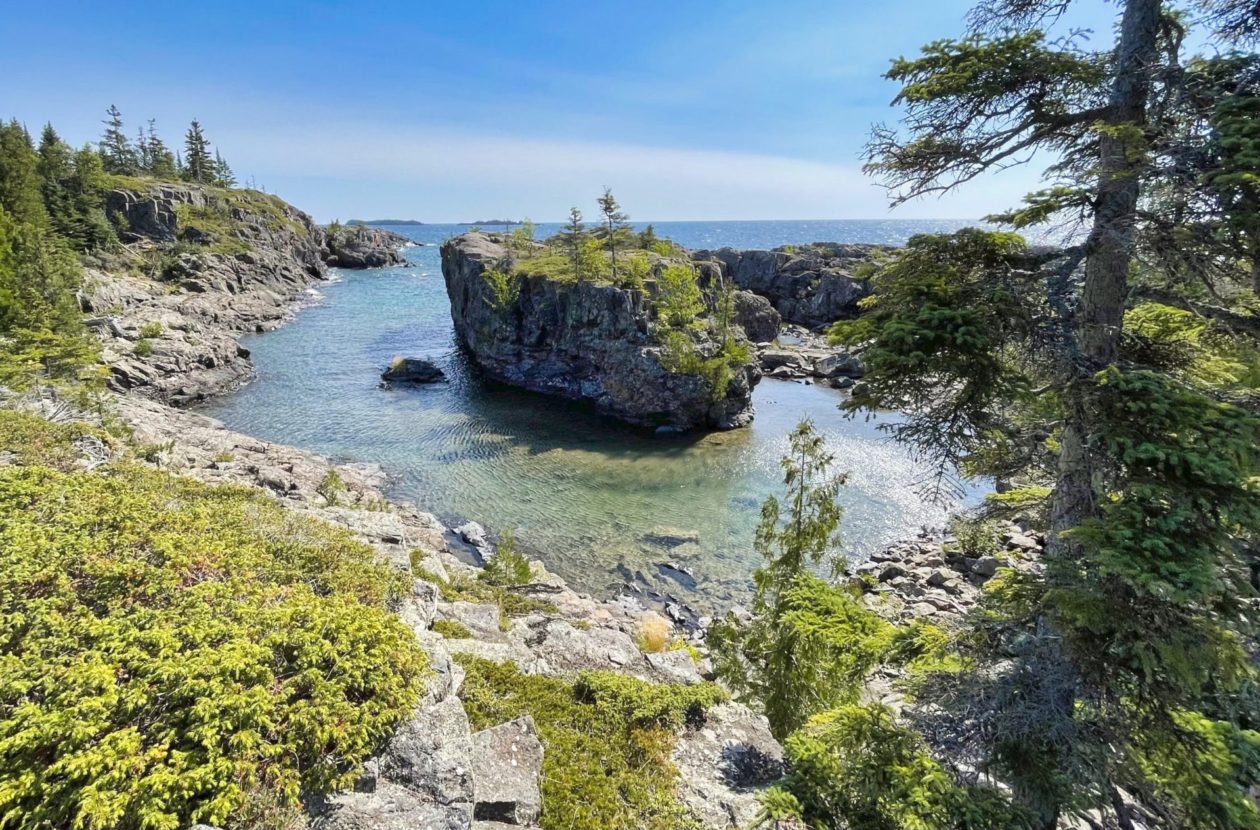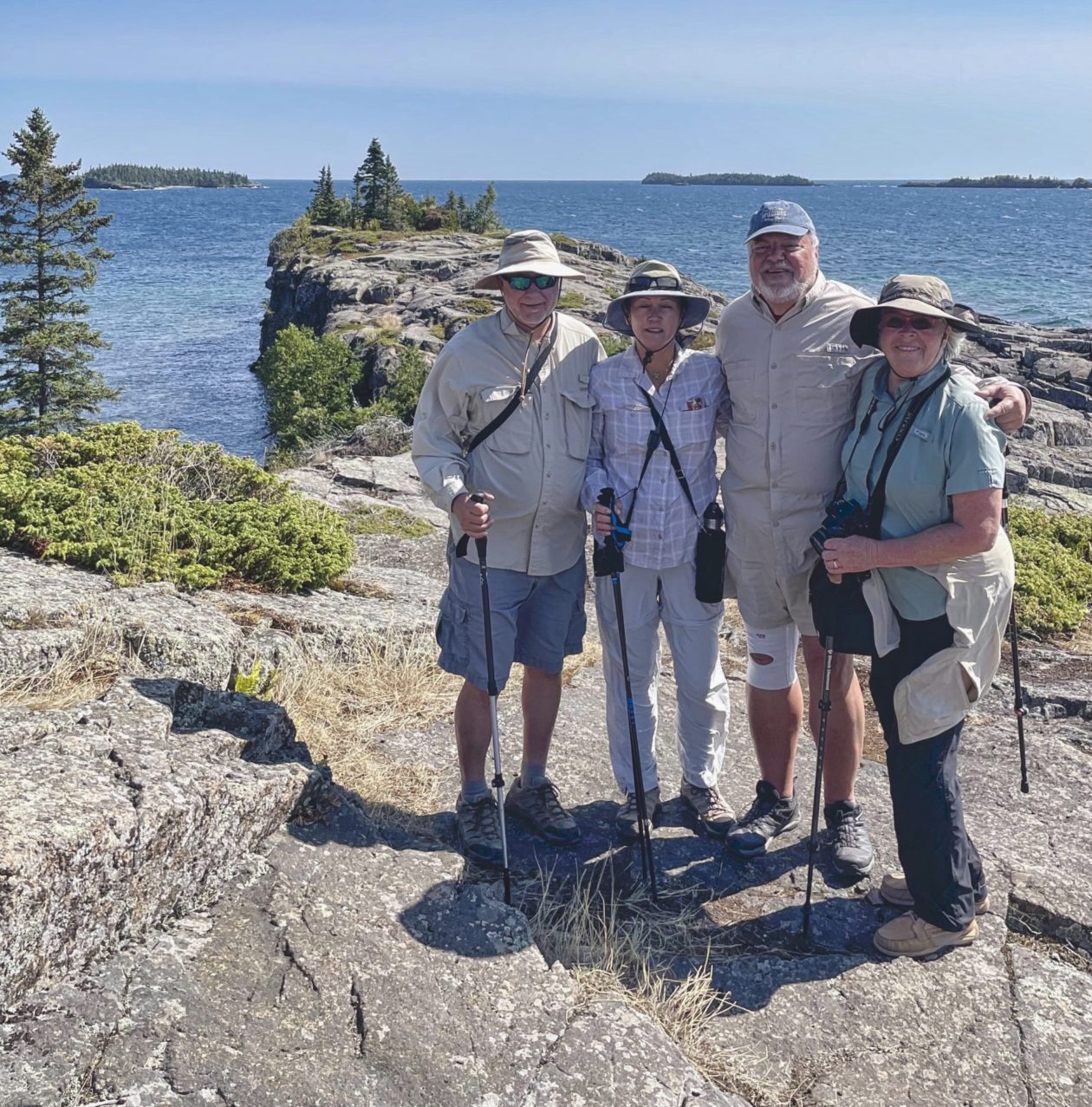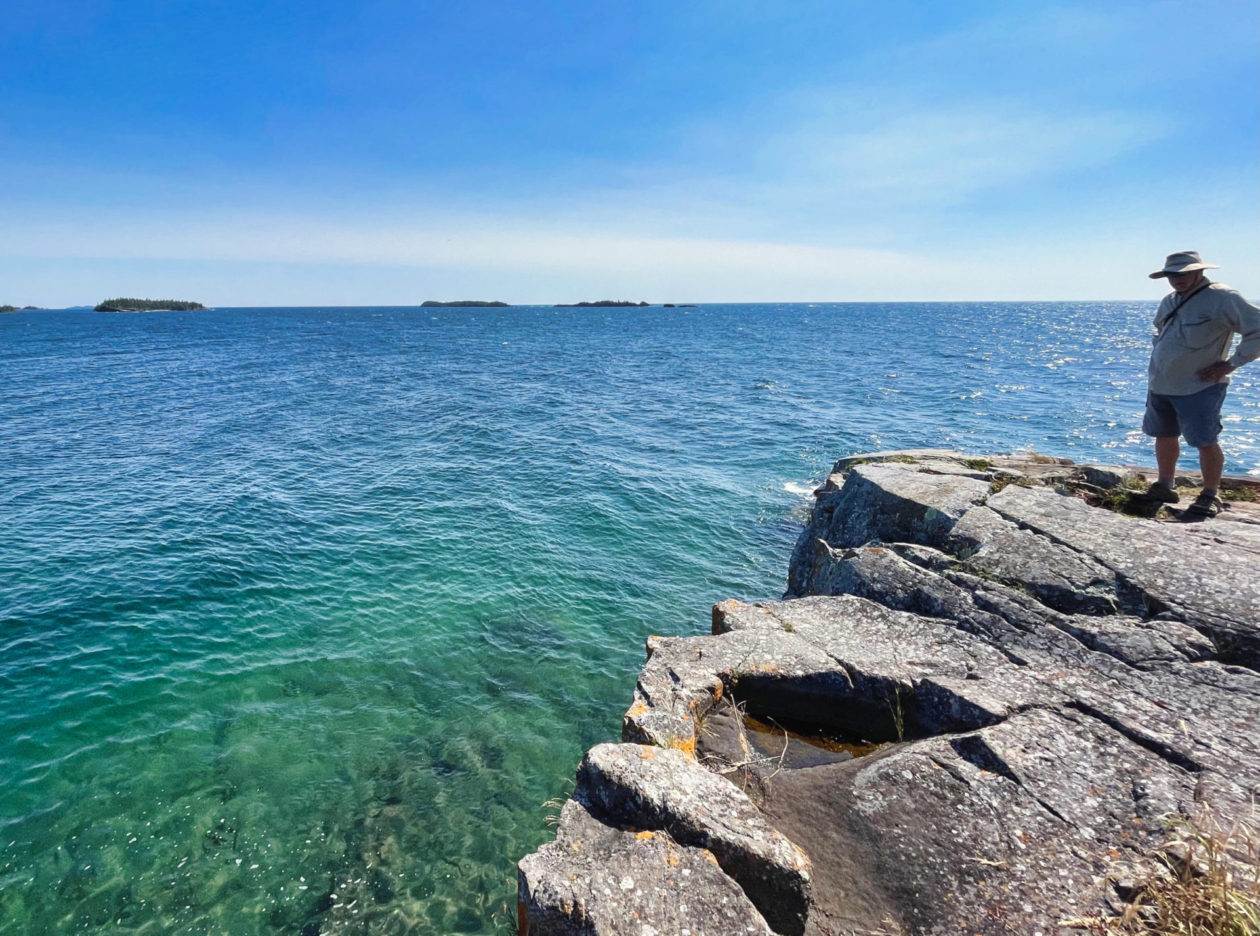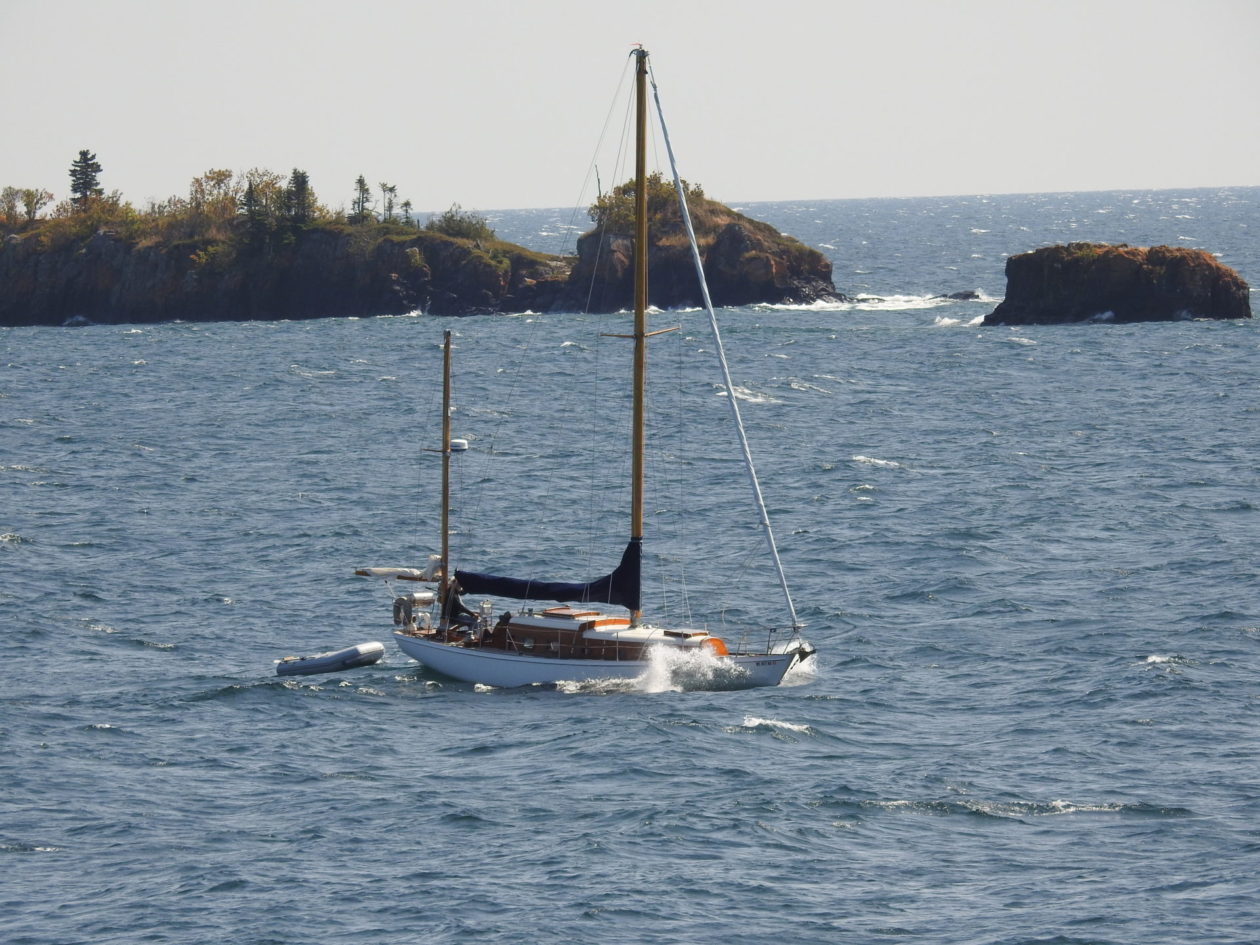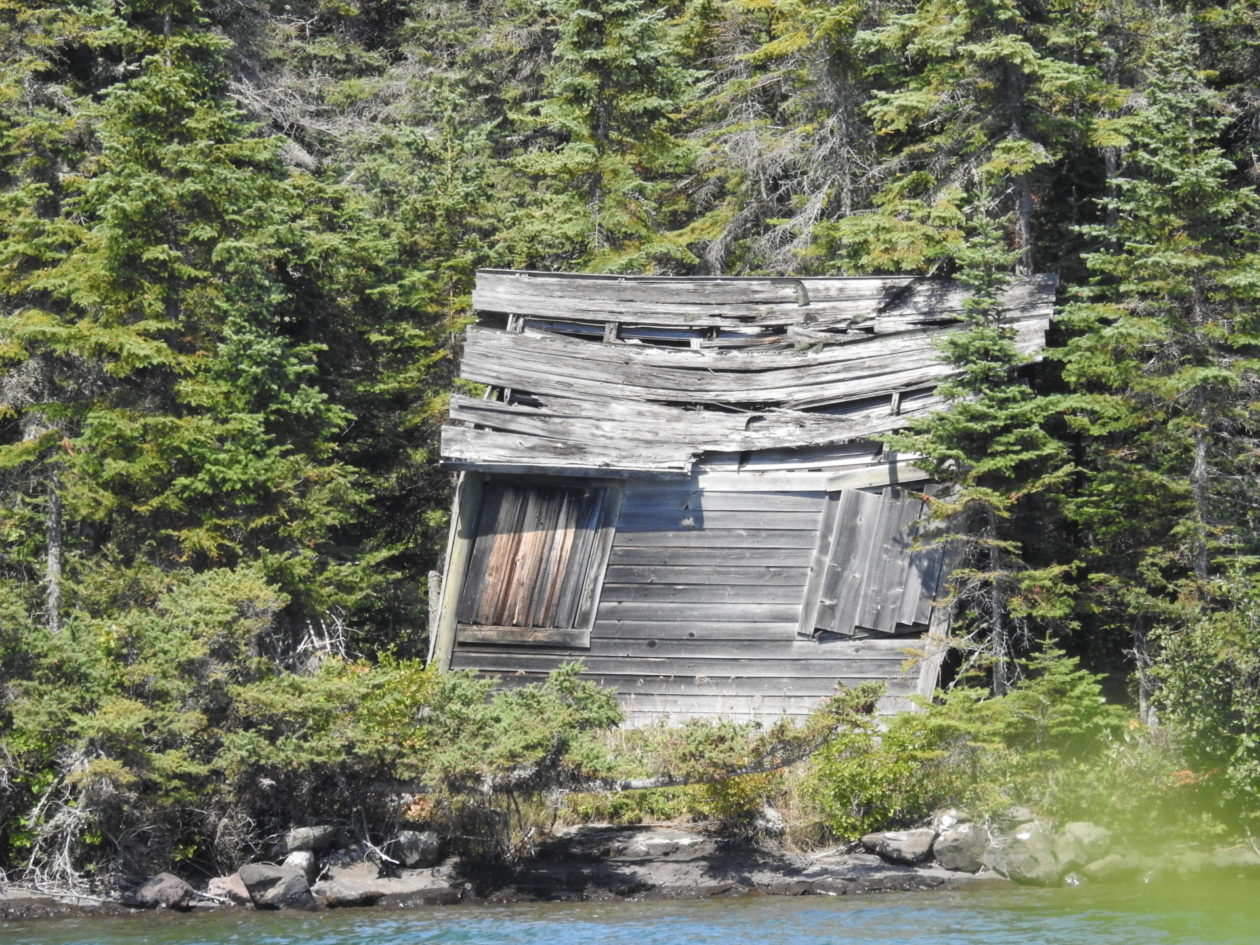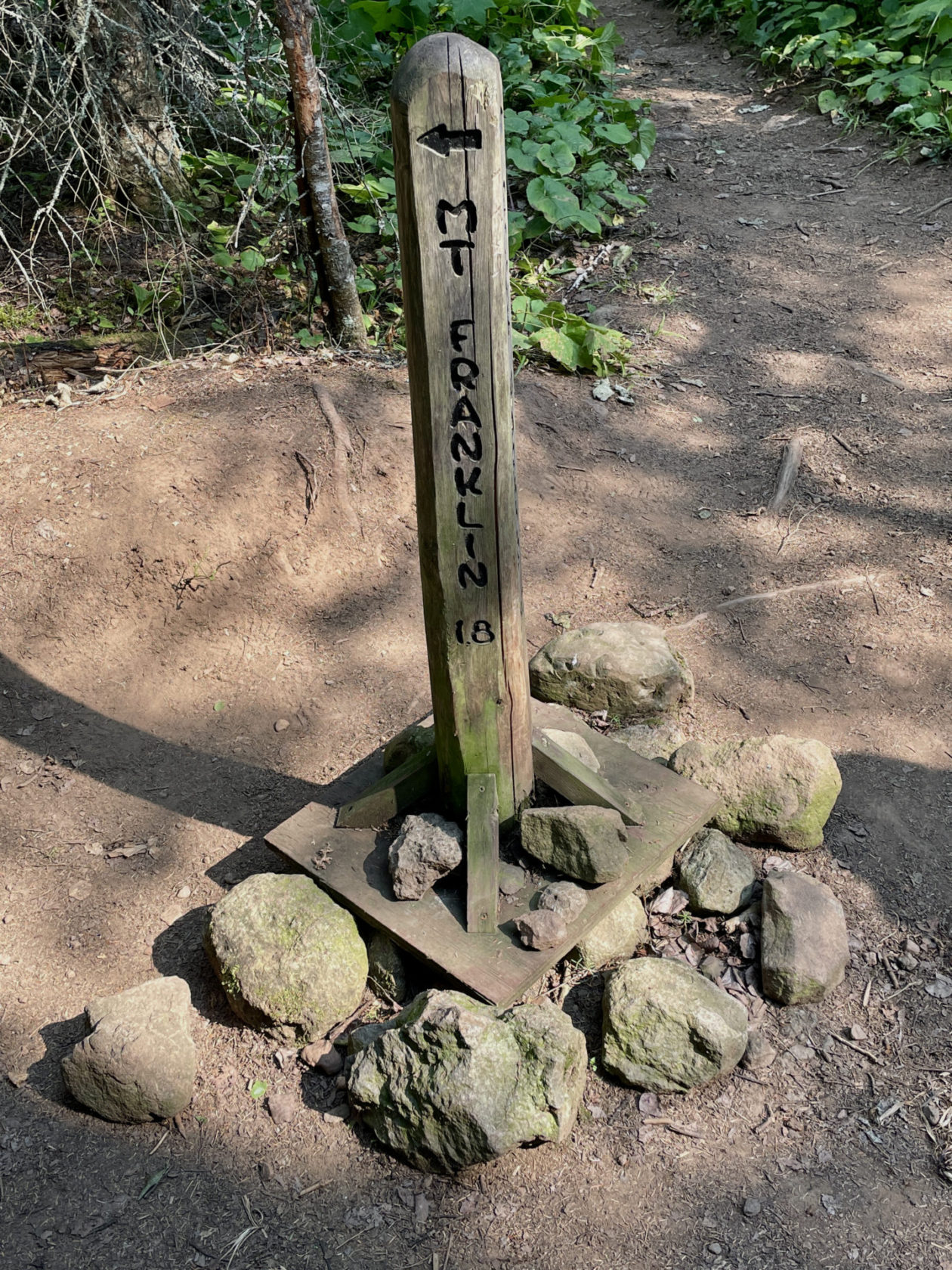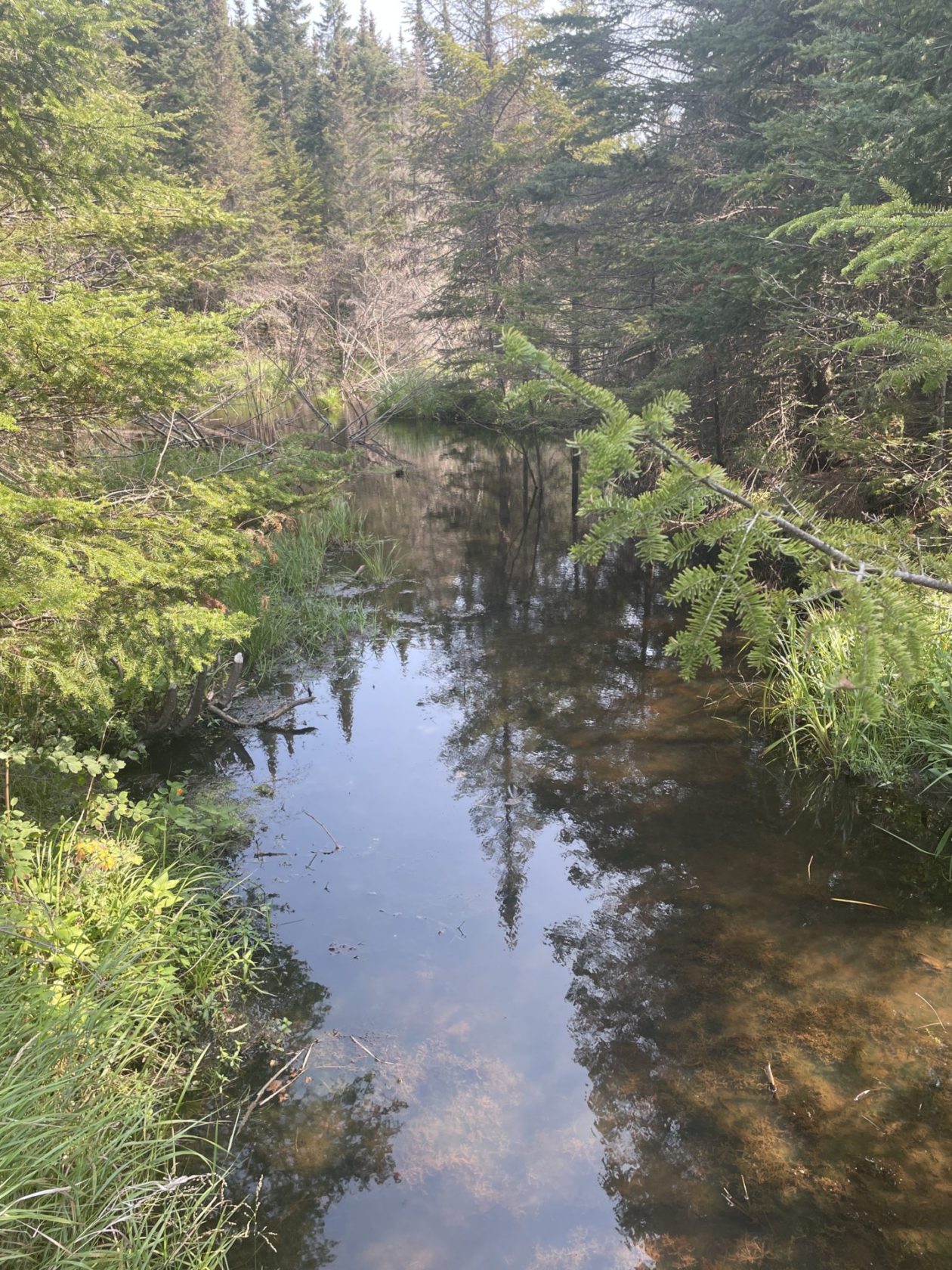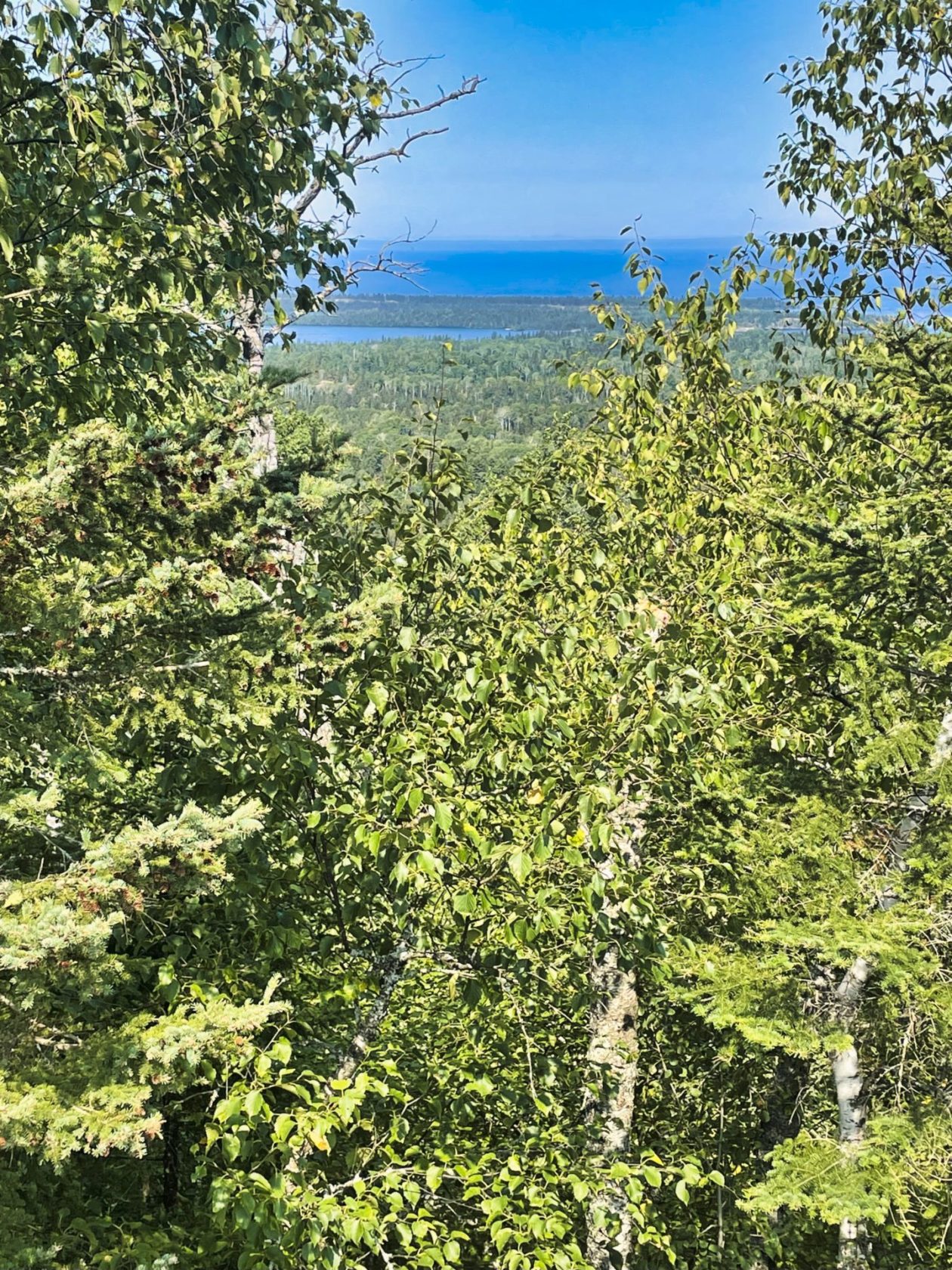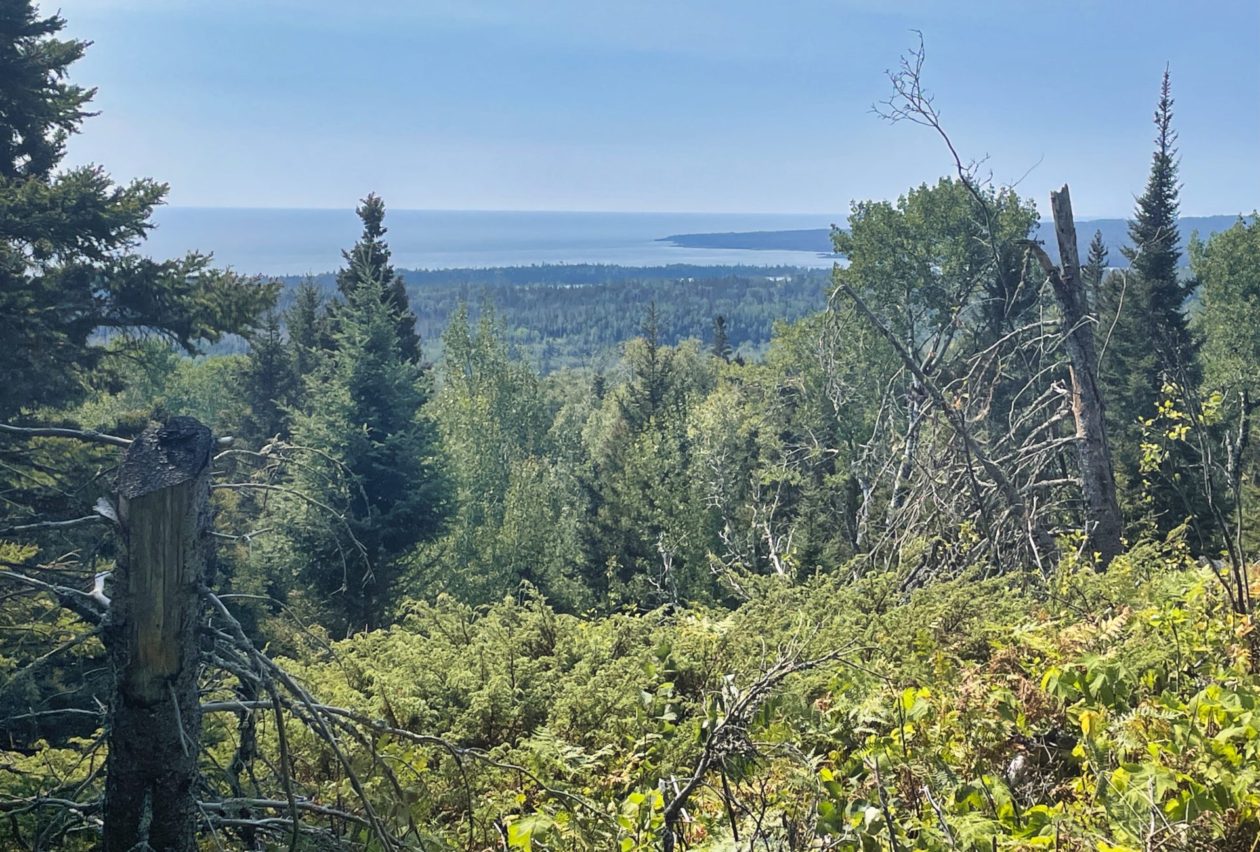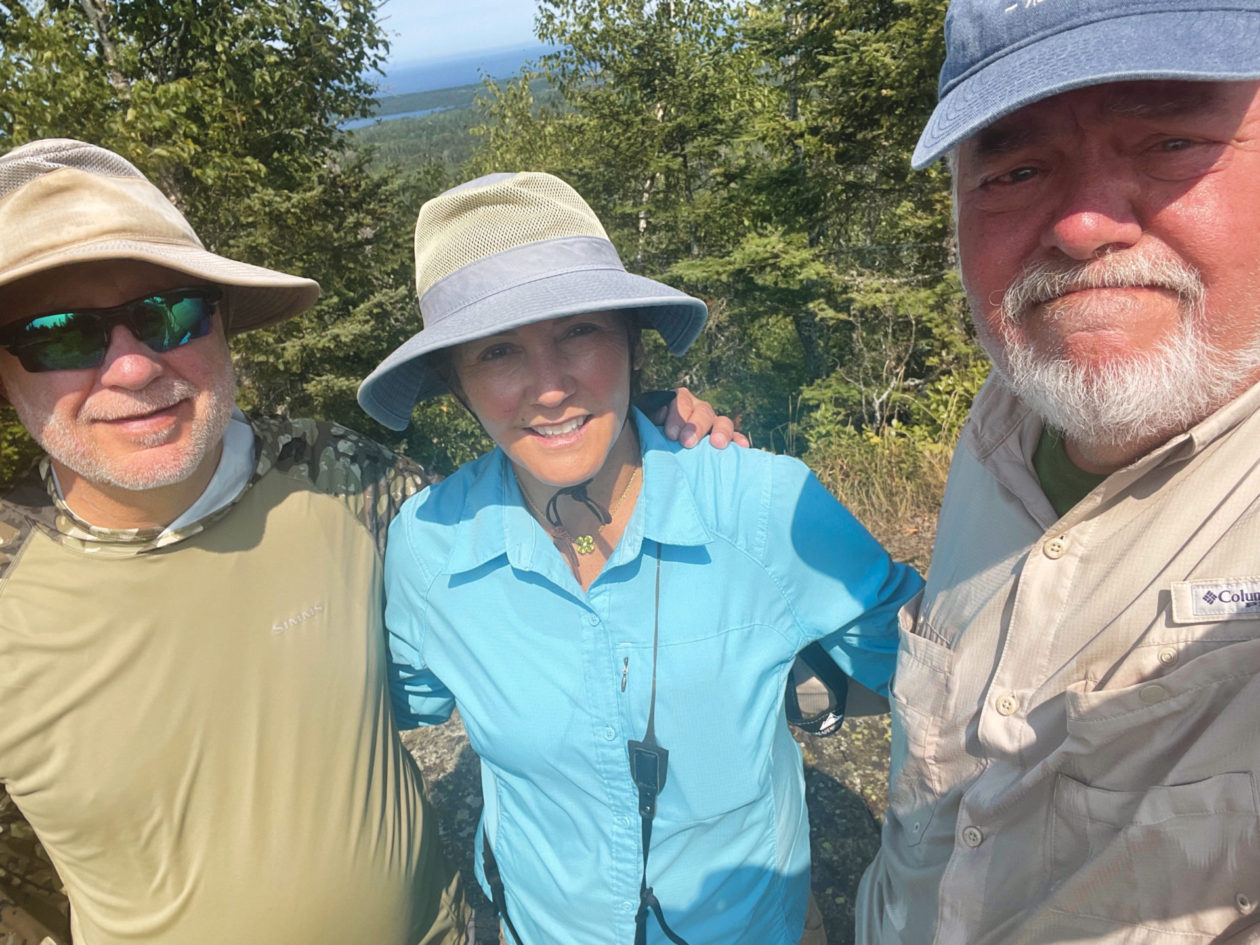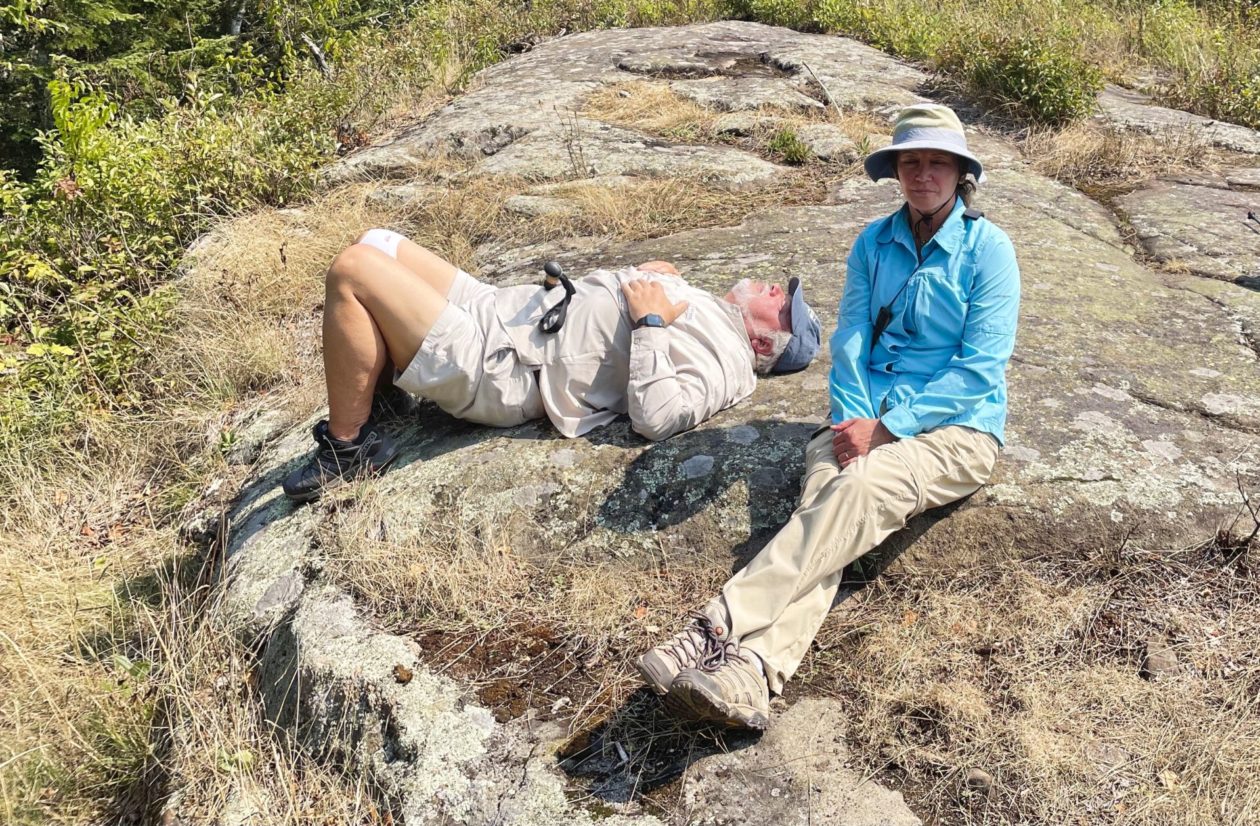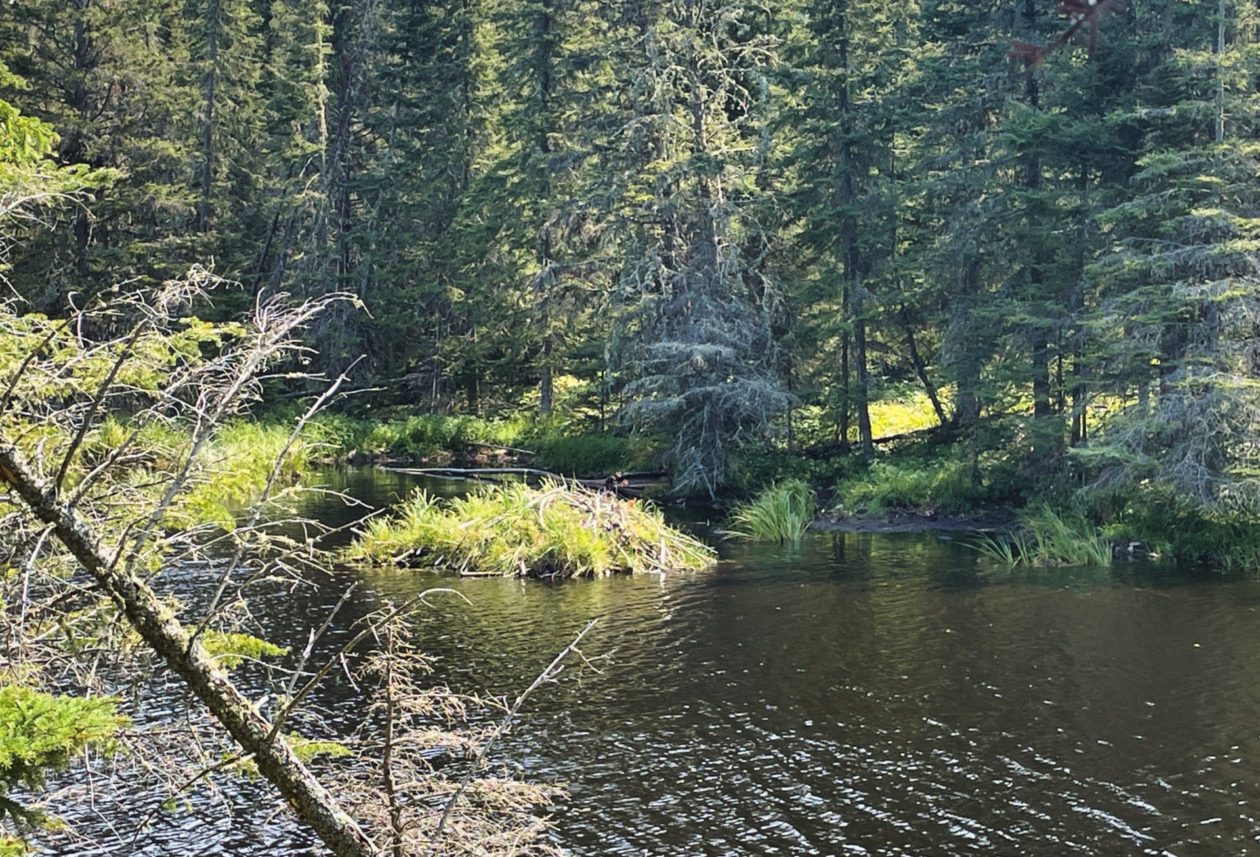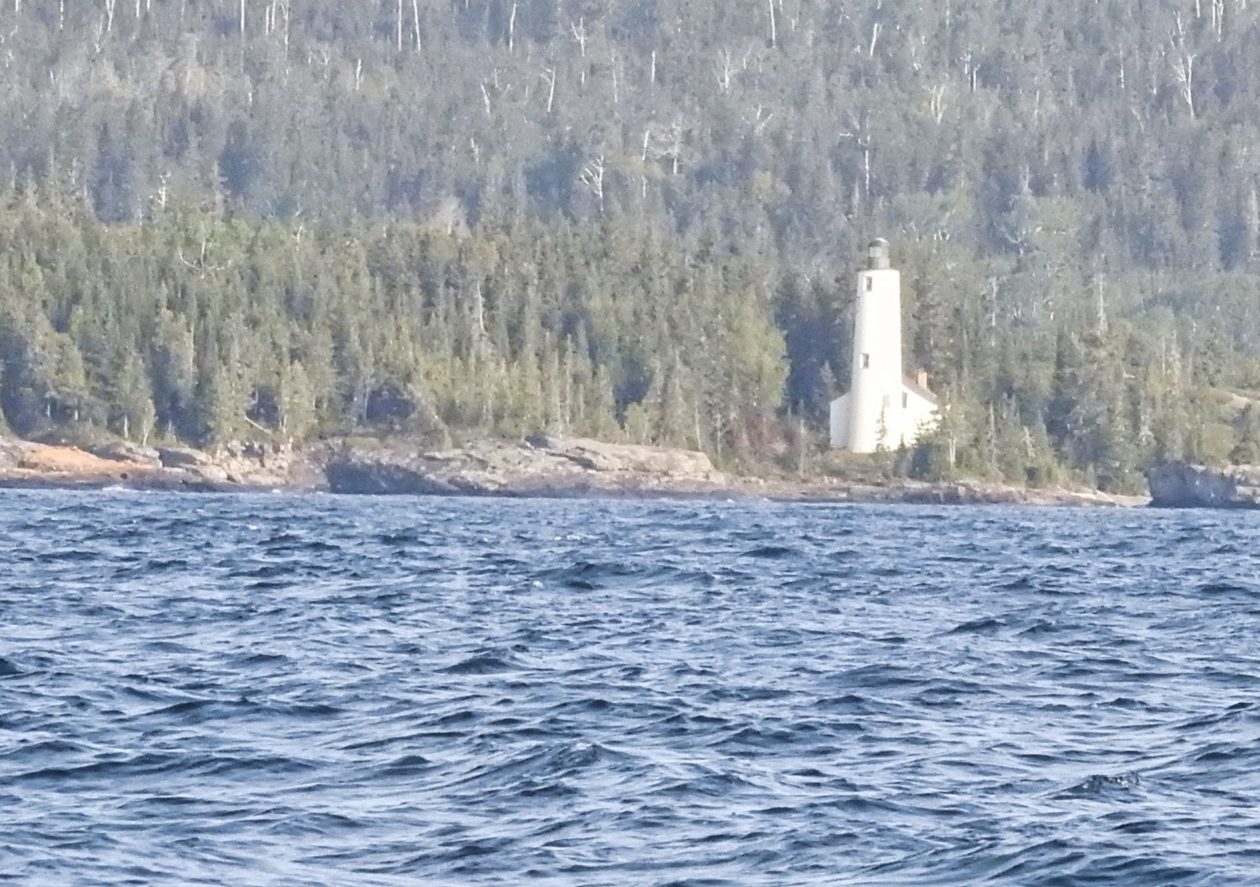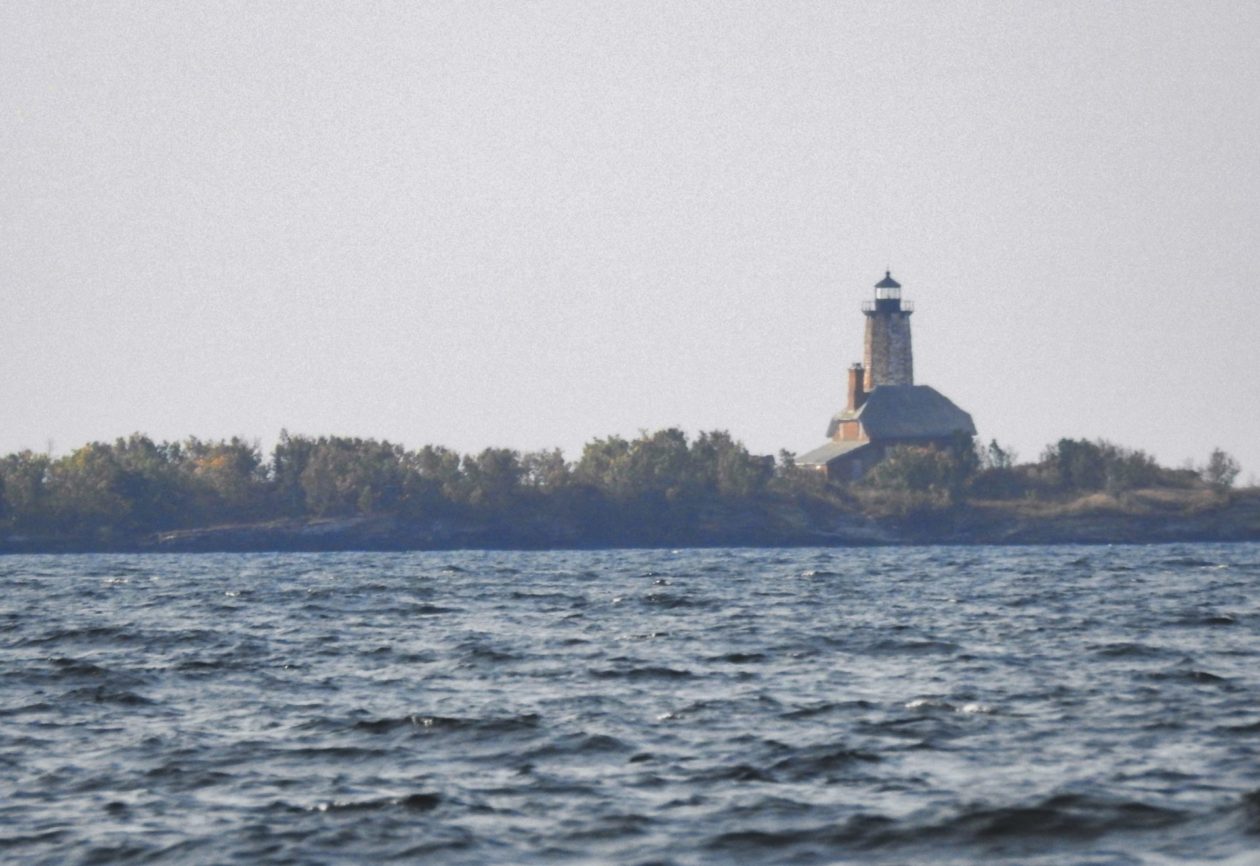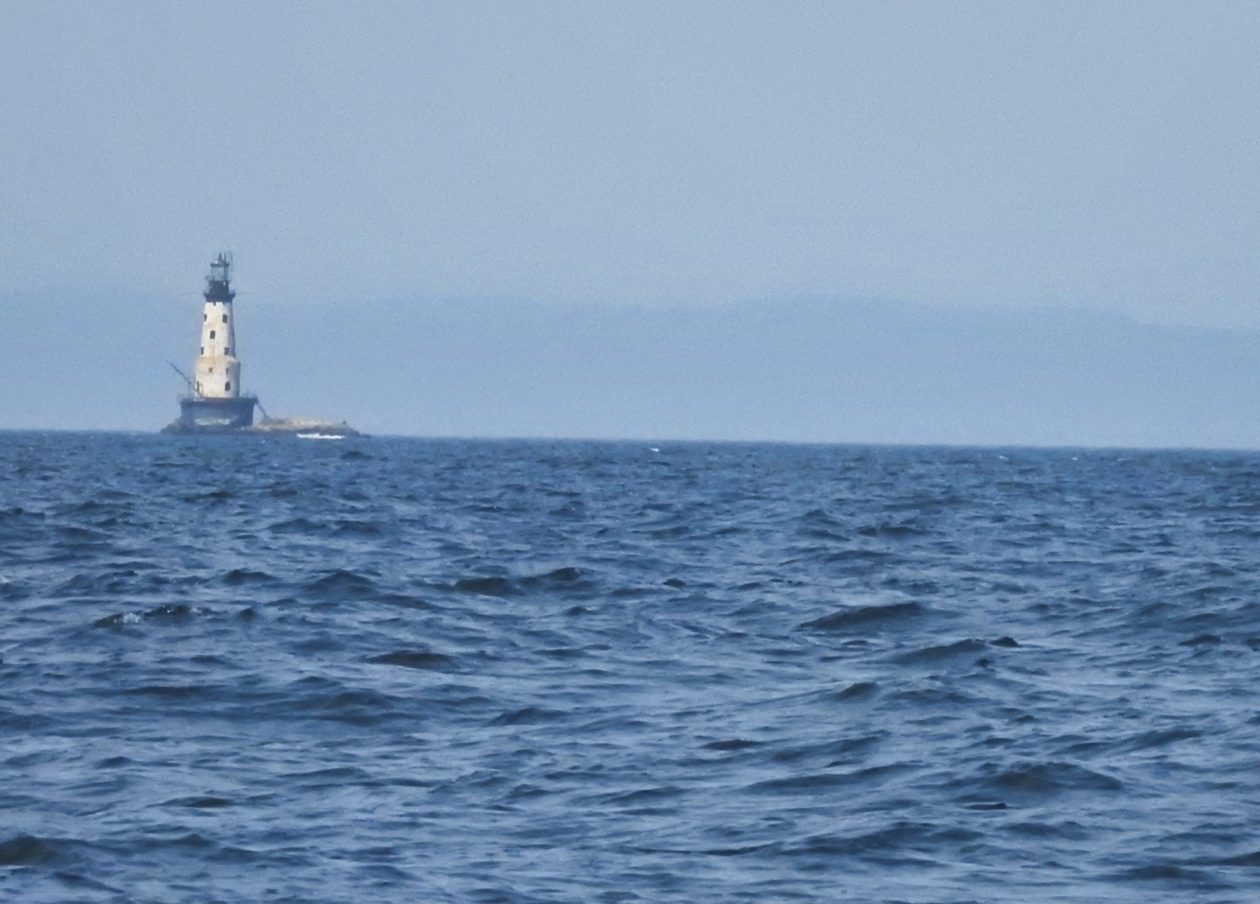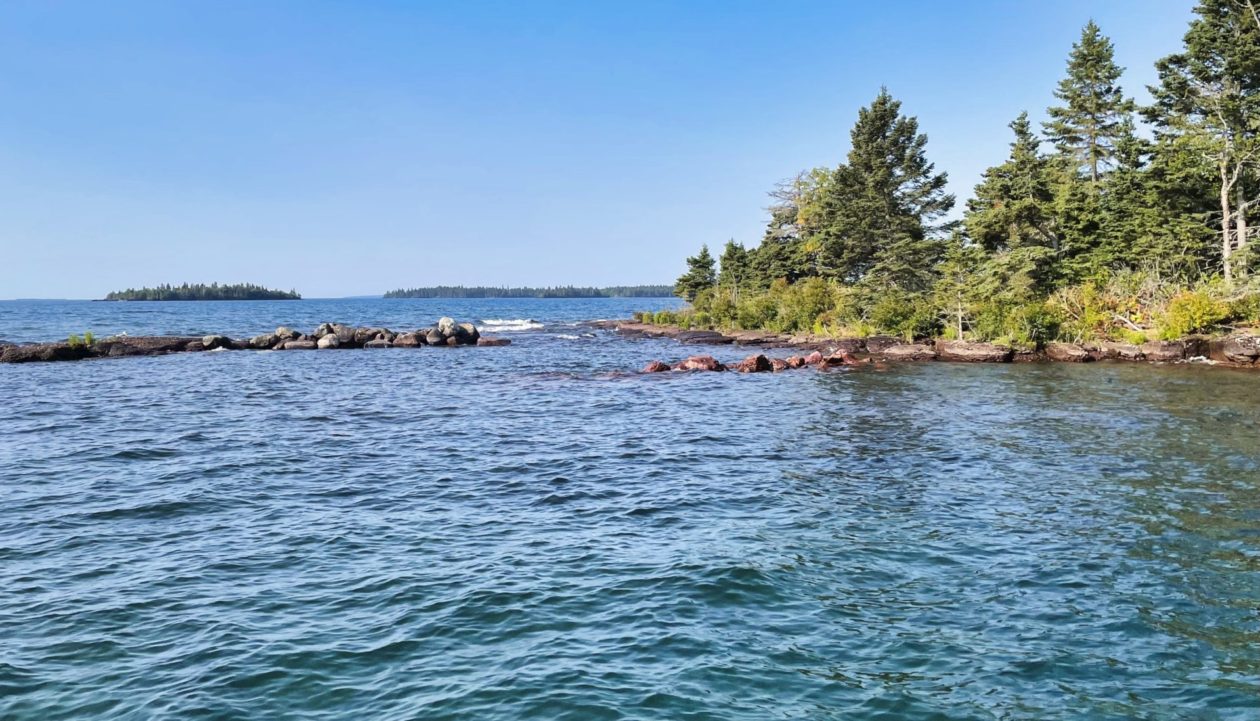- Trip start, Duluth stopover, and the International Wolf Center
- Duluth Round 2
- North Shore of Minnesota
- Isle Royale National Park
- Bayfield, Apostle Islands, and Hayward, WI
- Waterfalls, the Porkies and Bond Falls
- Pictured Rocks and the Great Lakes Shipwreck Museum
- Mackinac Island
- Dunes, friends, and the end of the trip
As I mentioned in an earlier post, this was one of the stops we were looking forward to. Isle Royale is the least-visited park in the Lower 48 states. It is also the site of the predator-prey, wolf-moose study that now has been going on continually for 62 years. One of the pioneers of this study is L. David Mech, who as a graduate student spent three summers and winters on the island, studying wolf behaviors and contributing significantly to the body of knowledge we have about wolves today, We actually listened to his book, “Wolf Island,” in the days before actually visiting the island. Our hopes were high of seeing either a moose (some likelihood) and/or a wolf (highly unlikely).
The island itself is actually an archipelago of more than 400 small islands. It was created by a combination of volcanic uplifting and glacial grinding actions, leaving the parallel ridges and valleys that exist today. Being in the middle of Lake Superior, these islands are known as the “shards of the continent.” Because of this isolation, only those species who could make the crossing (nearly 20 miles at the closest point of approach to the mainland) could make the trip (in winter by ice — when it was available, or in other seasons by swimming). Consequently, many of the species on the island have evolved somewhat differently than their mainland cousins. Humans have been coming here for thousands of years, initially indigenous people, and ultimately European explorers, miners, and lumbermen. You can still see old fishing shacks used by commercial fisherman and open pits where miners tried to extract the copper was there. Today, the park is nearly all designated wilderness area which will protect it for the future.
It is not easy to get to Isle Royale — you either go by seaplane or by passenger-only ferry. You can catch a ferry from Grand Portage, MN, or two other ports in MI ,which the park is considered a part of — even though it is much closer to MN and the temporary time change to Eastern time is somewhat annoying. We took the ferry from Grand Portage and while the nearest point of the island at Windigo is actually less than 2 hours away, the lodge we were staying at in the park at Rock Harbor was over 60 miles (or some 6.5 hours further) away! Luckily, on the trip out, both the winds and “seas” were calm (I can’t tell you how many times we forgot that we weren’t in the ocean — Lake Superior is so huge!). Nearly all of the people on our ferry were campers — individually and in groups. Many come every year to enjoy the park. We felt a little weird when we were the only ones with rolling duffels in the midst of so many backpacks, kayaks, etc. Like so many other national parks, the number of staff (and hence the services/programming) was greatly reduced. While unfortunate, it really didn’t impact our enjoyment of the park.
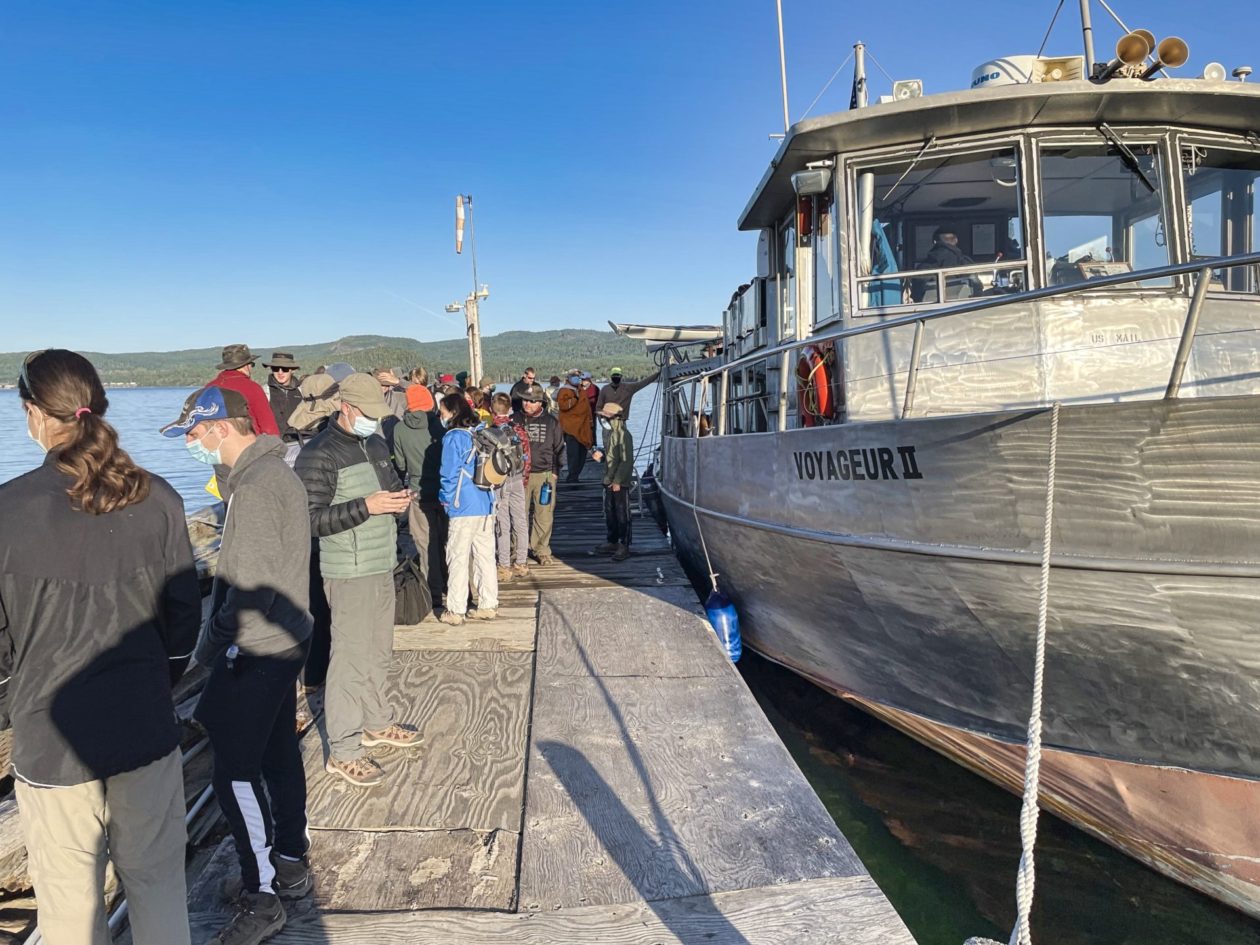
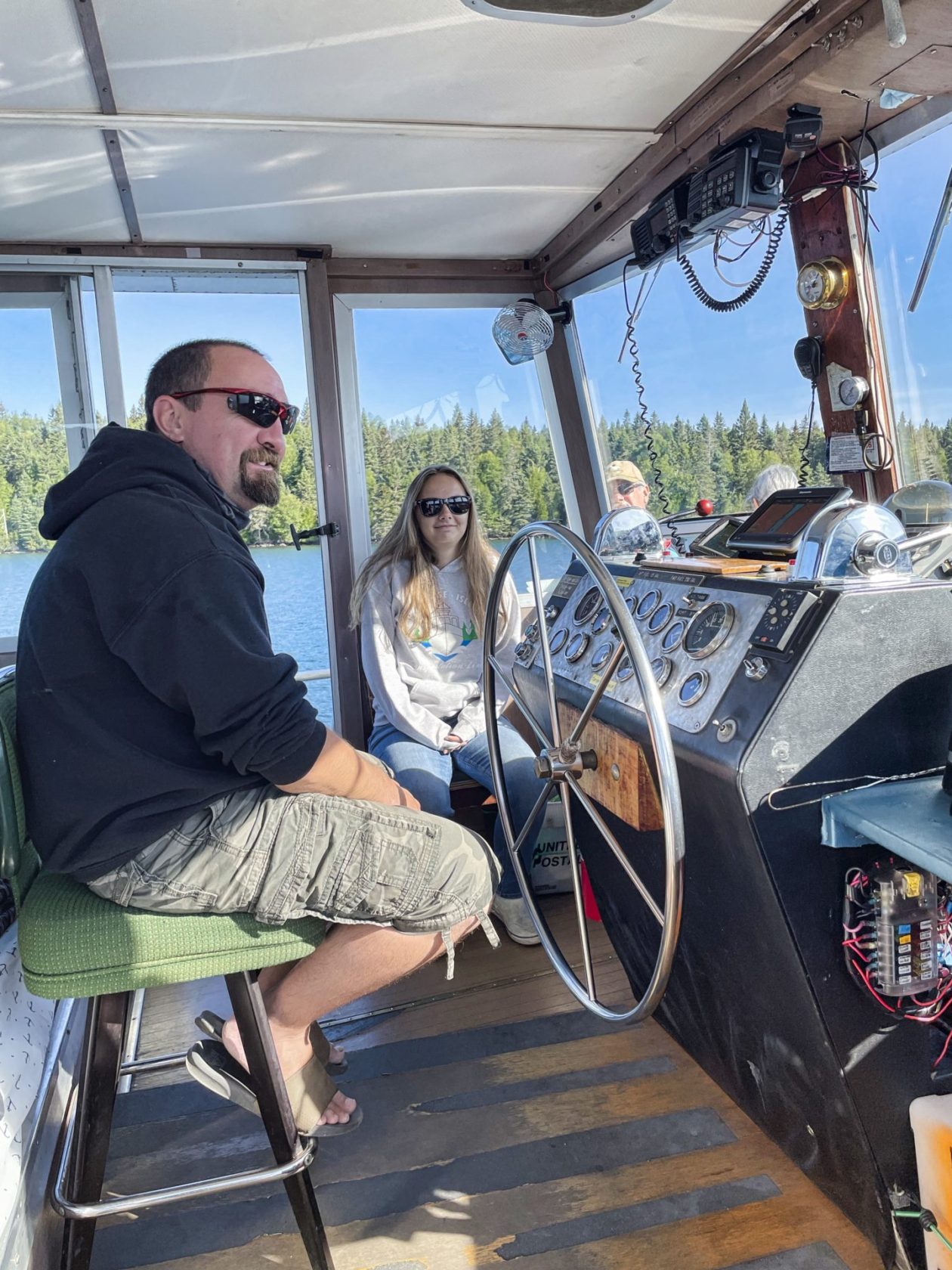
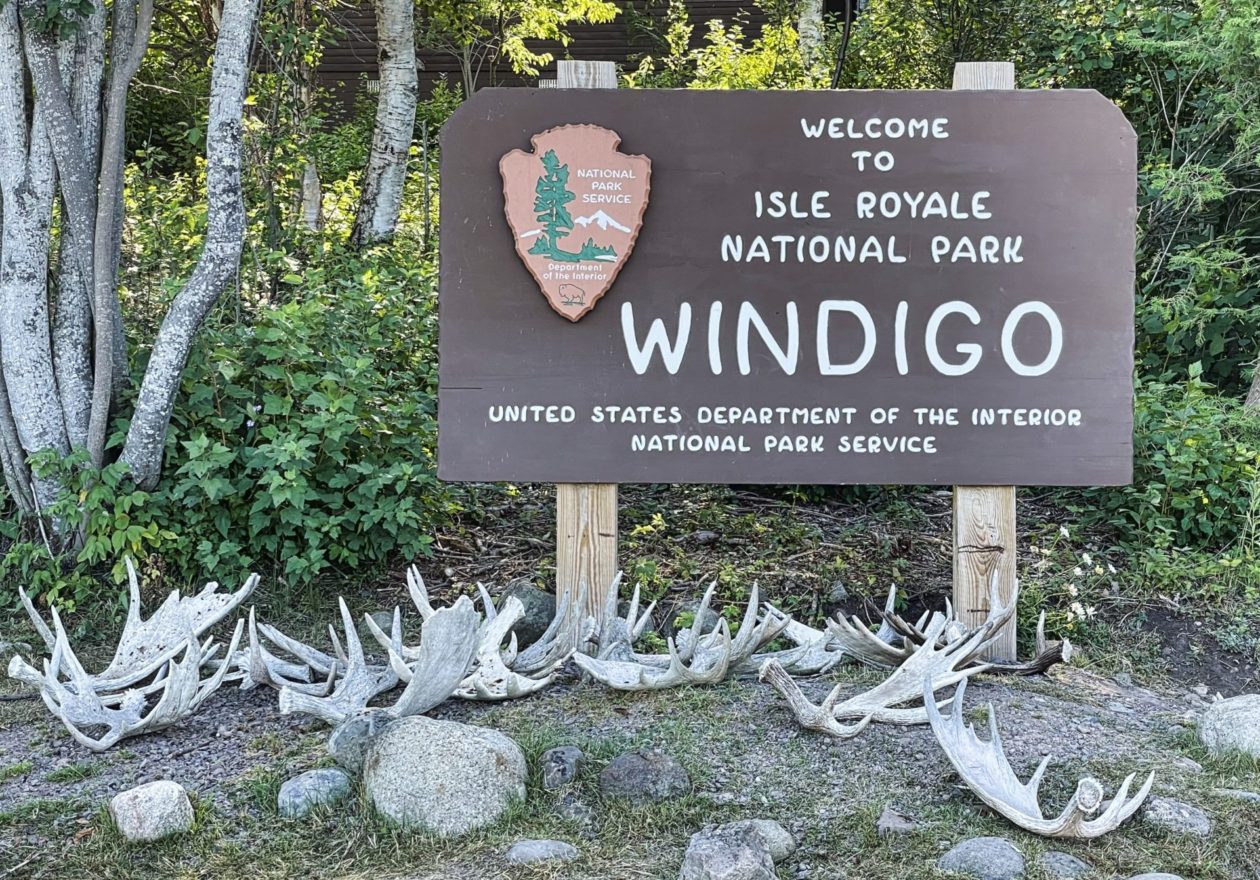
Our original plan was to do a mix of hikes and boat rides in the water taxis or rental boats in Rock Harbor to see the more isolated parts of the island — and increase our chances of seeing moose and wolves. Sadly, the winds (and waves) picked up, eliminating the water portion of the program. That left hiking and we did a lot! Our first significant hike was out to Scoville Point which provided some spectacular views of rock outcroppings and small islands off the main island. Despite all the warnings about mosquitoes and stinging black flies, this was the only time I got stung (which I was very thankful for). We saw lots of evidence of moose (hoof prints in the marshy areas), but no actual sightings.
Our next hike was up to Mount Franklin, named after Benjamin Franklin, which is on Greenstone Ridge, that forms a spine down the center of the island. This was a 12 mile hike, climbing up to a 1074 foot summit. I’m more of a 3-5 mile kinda hiking guide, so this more or less kicked my butt — but I made it! It was amazing to see the forests change from boreal forests of spruce, balsam, fir, and paper birch down by the water to deciduous forests of sugar maple and red oak as we got closer to the summit. The trails themselves could be real “ankle breakers” with lots of exposed roots and rocks. There were also a lot of plank bridges over the many marshes at the lower altitudes. By the way, the only wildlife we saw on Isle Royale was a family of river otters. A little disappointing, but we chose the comfort of a lodge instead of camping out in the wilderness. Anyway, while not seeing a lot of the island, we saw a good cross-section of it. We met a lot of people and chatted the evenings away, even without a campfire (fire restrictions in effect).
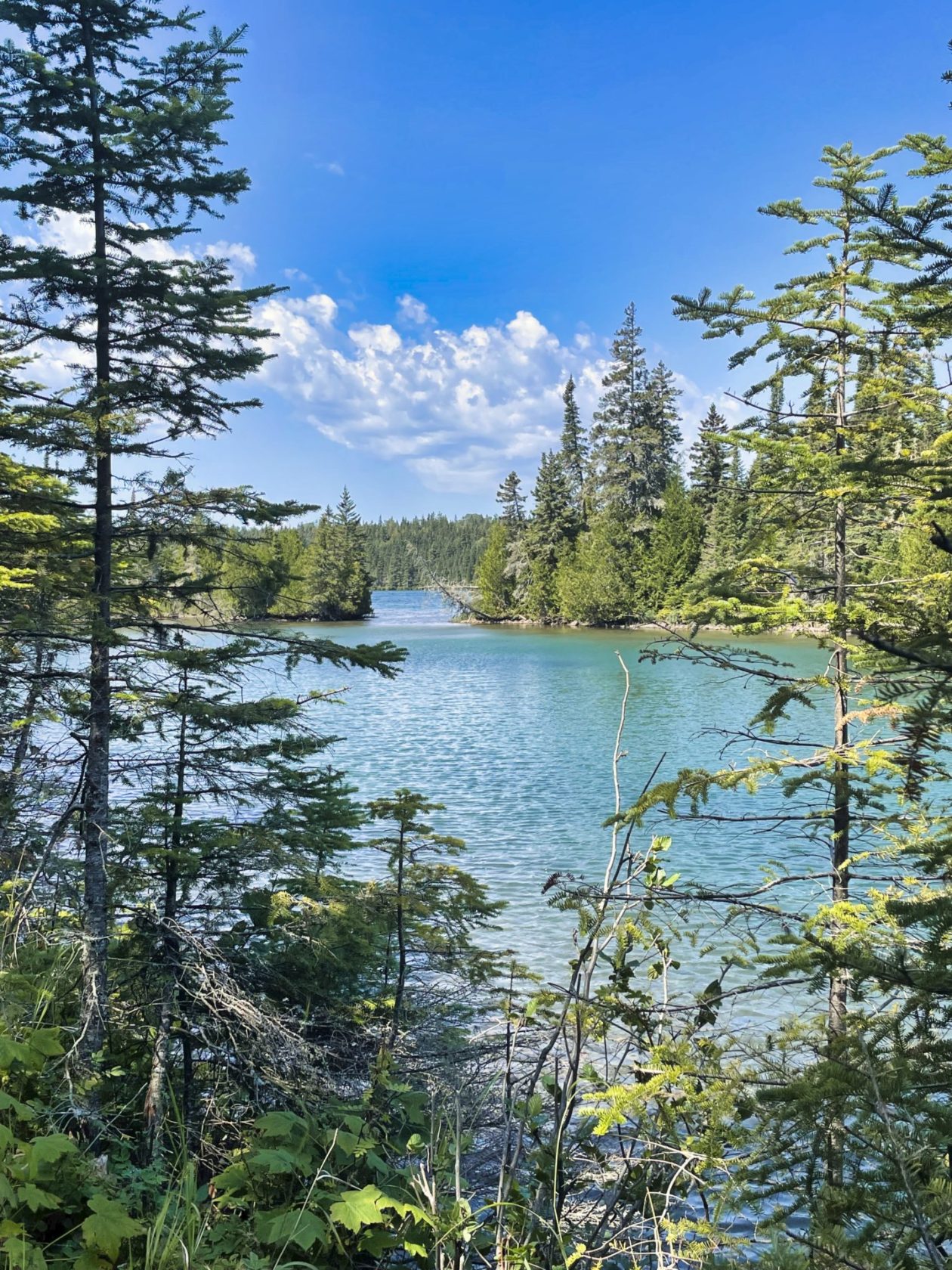
The trip back was a bit more exciting, starting out with 1-2 foot seas, growing to 5-6 feet. It makes that 8 hour trip go that much slower…. Anyway, this will probably be the only time we get to this park, but we thoroughly enjoyed it!
